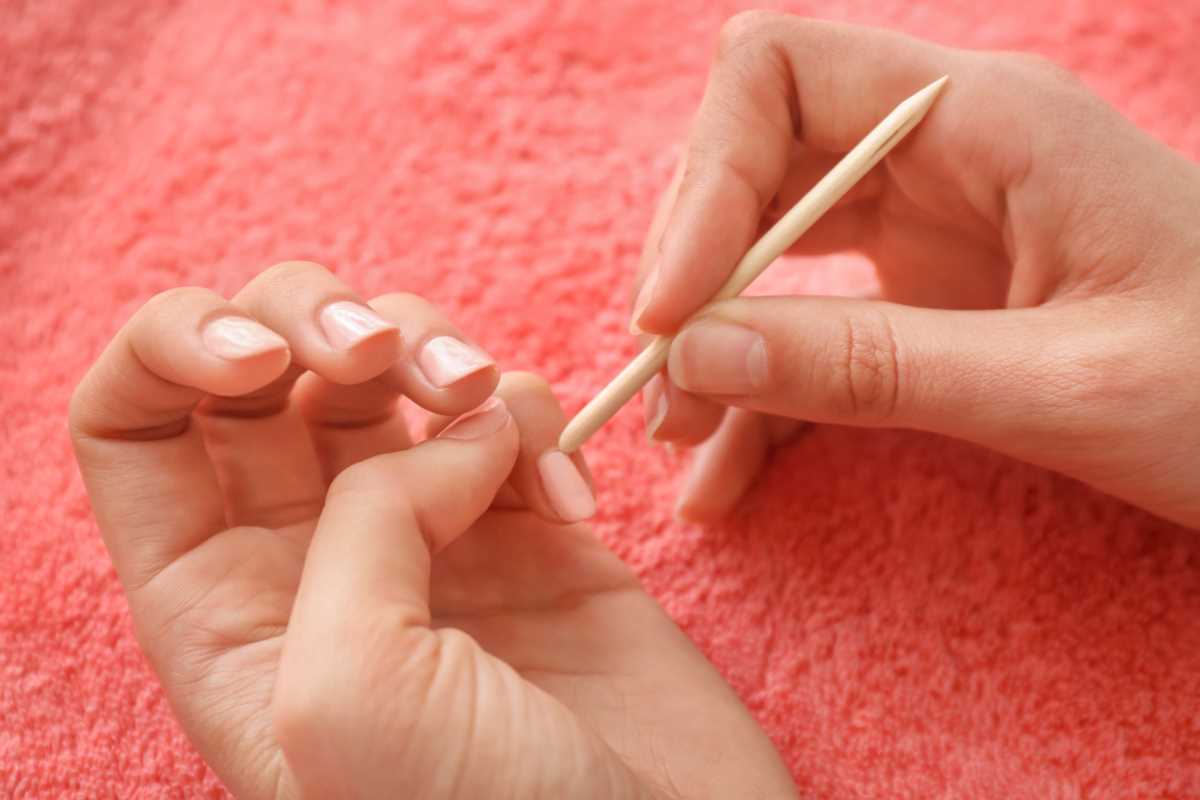Stress has become an unwelcome companion in our daily lives. 77% of Americans regularly report physical symptoms caused by stress, according to the American Psychological Association. While we can't eliminate all sources of stress, we can build resilience through simple, consistent practices. The good news? You don't need hours of free time or expensive treatments to feel calmer and more centered. Research shows that even brief stress-reduction techniques can trigger your body's relaxation response and lower cortisol levels. The key lies in consistency rather than duration.
These practices are designed to fit seamlessly into your existing routine, whether you're rushing between meetings or winding down after a long day. Each ritual offers a different approach to stress relief, allowing you to build a personalized toolkit that works with your lifestyle and preferences.
1. Deep Breathing with the 4-7-8 Technique
Deep breathing activates your parasympathetic nervous system, which signals your body to relax. The 4-7-8 technique, developed by Dr. Andrew Weil, is particularly effective for reducing anxiety and promoting calm.
How to practice:
- Sit comfortably with your back straight
- Exhale completely through your mouth
- Close your mouth and inhale through your nose for 4 counts
- Hold your breath for 7 counts
- Exhale through your mouth for 8 counts, making a whoosh sound
- Repeat this cycle 3-4 times
This technique works by increasing oxygen flow to your brain while slowing your heart rate. Studies published in the Journal of Clinical Medicine show that controlled breathing exercises can reduce stress hormones by up to 25% within minutes.
Practice this ritual first thing in the morning, before stressful meetings, or whenever you feel tension building. The beauty of breathing exercises is their accessibility – you can do them anywhere without special equipment.
2. Progressive Muscle Relaxation
Progressive muscle relaxation (PMR) helps you identify and release physical tension you might not even realize you're carrying. This technique involves systematically tensing and relaxing different muscle groups.
How to practice:
- Find a comfortable position, either sitting or lying down
- Start with your feet – tense the muscles for 5 seconds, then release
- Move up to your calves, thighs, abdomen, hands, arms, shoulders, and face
- Hold each tension for 5 seconds, then relax for 10 seconds
- Notice the contrast between tension and relaxation
Research from Harvard Medical School indicates that PMR can reduce cortisol levels and improve sleep quality. This practice is especially beneficial if you hold stress in your body through tight shoulders, clenched jaw, or tense muscles.
The technique becomes more effective with practice, as you learn to recognize early signs of physical tension and address them before they escalate.
3. Five-Minute Morning Pages
Morning pages, popularized by Julia Cameron in "The Artist's Way," involve writing three pages of stream-of-consciousness thoughts first thing in the morning. For our five-minute version, focus on clearing mental clutter through focused writing.
How to practice:
- Set a timer for exactly 5 minutes
- Write continuously without stopping to edit or think
- Let your thoughts flow onto paper without judgment
- Don't worry about grammar, spelling, or making sense
- When the timer stops, close your notebook and move on with your day
Expressive writing has been shown to reduce stress and improve immune function. A study published in Psychosomatic Medicine found that participants who wrote about their thoughts and feelings for just 15-20 minutes showed improved mood and fewer stress-related symptoms.
This ritual works by creating a mental release valve, preventing worries and racing thoughts from building up throughout the day. It's particularly effective for people who wake up with their minds already running.
4. Mindful Tea or Coffee Ritual
Transform your daily beverage routine into a mindfulness practice. This ritual combines the stress-reducing benefits of warm drinks with present-moment awareness.
How to practice:
- Choose your beverage mindfully, considering what your body needs
- As you prepare it, focus on each step: the sound of water boiling, the aroma of tea or coffee
- Hold the warm cup in your hands and feel the temperature
- Take three deep breaths, inhaling the scent
- Drink slowly, paying attention to the taste, warmth, and sensation
- Stay present for the entire five minutes without checking your phone or thinking about your to-do list
Studies show that mindful eating and drinking practices can reduce cortisol levels and improve overall well-being. The warmth of the beverage also provides physical comfort, which can help calm your nervous system.
This ritual works particularly well as a transition between home and work, or as an afternoon reset when energy starts to flag.
5. Gratitude Meditation
Gratitude practices have been extensively studied and consistently show benefits for mental health and stress reduction. This focused meditation combines gratitude with mindfulness for maximum impact.
How to practice:
- Sit quietly and close your eyes
- Take three deep breaths to center yourself
- Bring to mind three specific things you're grateful for today
- For each item, spend about a minute really feeling the appreciation
- Notice how gratitude feels in your body – perhaps warmth in your chest or a softening of your facial muscles
- End by setting an intention to carry this appreciation with you
Research published in the Journal of Happiness Studies found that regular gratitude practice can reduce stress by up to 23% and improve sleep quality. The key is specificity – rather than general gratitude, focus on particular moments, people, or experiences.
This practice is especially powerful during difficult periods, as it helps shift your brain's focus from problems to positive aspects of your life.
6. Quick Nature Connection
Even brief exposure to nature can significantly reduce stress levels. If you can't get outside, bringing nature indoors through visualization can provide similar benefits.
How to practice (outdoor version):
- Step outside for 5 minutes, even if it's just to your doorstep or a window
- Focus on what you can see, hear, and feel
- Notice the sky, trees, birds, or even just the air on your skin
- Take several deep breaths of fresh air
- If possible, touch something natural like a tree, plant, or even just feel the ground under your feet
Indoor alternative:
- Look at a plant or nature photograph
- Close your eyes and visualize a peaceful natural setting
- Listen to nature sounds like ocean waves or forest sounds
- Use essential oils like lavender or eucalyptus to engage your sense of smell
Studies from Stanford University show that spending time in nature, even briefly, reduces activity in the brain region associated with stress and negative thinking. The practice of "forest bathing" has been shown to lower cortisol levels within minutes.
7. Desk-Based Stretching Sequence
Physical tension often mirrors mental stress. This simple stretching routine can be done at your desk and helps release common areas where stress accumulates.
How to practice:
- Neck rolls: Slowly roll your head in a circle, 5 times each direction
- Shoulder shrugs: Lift your shoulders to your ears, hold for 5 seconds, release
- Spinal twist: Sitting tall, twist gently to the right, hold, then left
- Forward fold: Let your head drop forward, allowing your neck and shoulders to release
- Wrist circles: Extend your arms and circle your wrists to release hand and arm tension
This sequence targets the areas most affected by desk work and digital device use. Research shows that even brief movement breaks can reduce muscle tension and improve mood.
The ritual works by interrupting the physical stress response and reminding your body that you're safe to relax. It's particularly effective during long work sessions or when you notice your shoulders creeping up toward your ears.
8. Loving-Kindness Meditation
This practice involves sending good wishes to yourself and others, which research shows can reduce stress and increase feelings of connection and well-being.
How to practice:
- Sit comfortably and close your eyes
- Start by directing kind wishes toward yourself: "May I be happy, may I be healthy, may I be at peace"
- Next, think of someone you love and extend the same wishes to them
- Then include someone neutral – perhaps a coworker or neighbor
- If you're feeling strong, include someone you have difficulty with
- End by sending these wishes to all beings everywhere
Studies from Emory University show that loving-kindness meditation can reduce stress and increase positive emotions within just seven weeks of practice. Even single sessions can shift brain activity toward patterns associated with greater well-being.
This practice is particularly helpful when you're feeling isolated, frustrated with others, or being self-critical. It helps create a sense of connection and compassion that naturally counteracts stress.
9. Digital Sunset Practice
Our devices can be significant sources of stress through constant notifications, information overload, and blue light exposure. Creating boundaries with technology can provide immediate relief.
How to practice:
- Choose a specific time each evening for your "digital sunset"
- Set all devices to do not disturb or airplane mode
- Put phones and tablets in another room or in a drawer
- Use these 5 minutes for any other calming activity: reading, gentle stretching, or simply sitting quietly
- Notice any urges to check your devices without judgment
- Gradually extend this period as it becomes more comfortable
Research from the University of California, Irvine shows that constant connectivity can keep cortisol levels elevated throughout the day. Creating device-free periods allows your nervous system to truly rest and reset.
This ritual is especially important in the evening, as blue light from screens can interfere with melatonin production and sleep quality, creating a cycle of stress and poor rest.
10. Visualization and Mental Reset
Guided visualization can quickly shift your mental state and activate the relaxation response. This technique uses your imagination to create a sense of calm and peace.
How to practice:
- Sit or lie down comfortably and close your eyes
- Take three deep breaths to settle your mind
- Visualize a place where you feel completely safe and peaceful – this might be a beach, forest, cozy room, or somewhere from your memory
- Engage all your senses: What do you see, hear, smell, and feel in this place?
- Spend several minutes exploring this space in your mind
- Before opening your eyes, set an intention to carry this sense of peace with you
Studies show that visualization can lower blood pressure, reduce anxiety, and improve mood. The brain often responds to vivid mental imagery similarly to real experiences, making this a powerful tool for stress management.
This technique is particularly useful before challenging situations, after difficult conversations, or anytime you need to mentally reset and refocus.
 (Image via
(Image via





